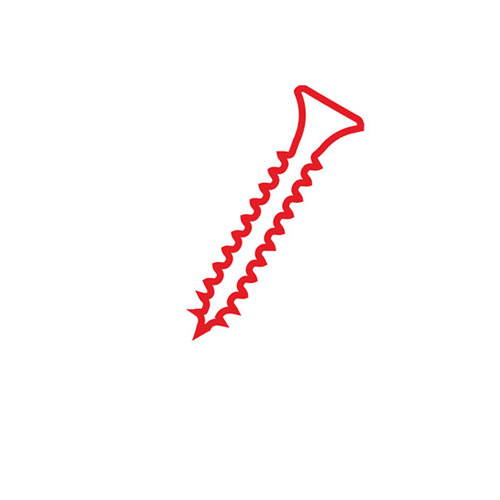DuPont™ Test ArmorWall™ Plus
5-in-1 Composite Panel for DuPont™ ArmorWall™ System (1-Hour Fire-Rated)

DuPont™ Test ArmorWall™ Plus
5-in-1 Composite Panel for DuPont™ ArmorWall™ System (1-Hour Fire-Rated)
<br><b>DuPont™ ArmorWall™ Plus </b> is an ICC listed (ESL-1302, ESL-1306, ESL-1442, ESL-1536, and ESL-1543), high strength, fire-resistant exterior wall sheathing product. <b>ArmorWall™ Plus FR SIS</b> offers a factory-applied, high quality air and water-resistive barrier. Once seams and fasteners have been sealed the enclosure may be considered “dried-in”, allowing interior construction to commence regardless of final exterior finish status.<br><br>ArmorWall™ Plus FR SIS incorporates five traditional building enclosure elements into a single panel product: structural sheathing, fire-resistance, air barrier, water-resistive barrier, and a high-performance continuous insulation layer. The <b>five-in-one</b> system of <b>ArmorWall™ Plus FR SIS</b> can replace several traditional individual components, making it a cost-saving and labor-reducing option compared to traditional, individual components.
Features & Benefits
Specifications
Testing
| TEST METHOD3 | TEST TITLE | PROPERTY1 | RESULTS |
|---|---|---|---|
| Air | |||
| ASTM E2357 | Standard Test Method for Determining Air Leakage Rate of Air Barrier Assemblies | Air Leakage Resistance | Pass |
| ASTM E283 | Standard Test Method for Determining Rate of Air Leakage Through Exterior Windows, Skylights, Curtain Walls, and Doors Under Specified Pressure Differences Across the Specimen | Air Infiltration at 75 Pa | 0.01 cfm/ft2 (0.1 L/s/m2) |
| ASTM E283 | Standard Test Method for Determining Rate of Air Leakage Through Exterior Windows, Skylights, Curtain Walls, and Doors Under Specified Pressure Differences Across the Specimen | Air Infiltration at 300 Pa | 0.04 cfm/ft2 (0.2L/s/m2) |
| ASTM E96 (Procedure A) | Standard Test Method for Steady-State Thermal Transmission Properties by Means of the Heat Flow Meter Apparatus | Vapor Permeance (of 2" panel) | 0.5 Perms (grains/hr in Hg ft2) |
| Fire | |||
| NFPA 2858 | Standard Fire Test Method for Evaluation of Fire Propagation Characteristics of Exterior Wall Assemblies Containing Combustible Components | Fire Resistance | Pass |
| ASTM E84 | Standard Test Method for Surface Burning Characteristics of Building Materials | Flame Spread/Smoke Developed Index (MgO Board) | 0 / 0 |
| ASTM E842 | Standard Test Method for Surface Burning Characteristics of Building Materials | Flame Spread/Smoke Developed Index (insulation) | 20 / 200 |
| Strength | |||
| ASTM D1621 | Standard Test Method for Compressive Properties of Rigid Cellular Plastics | Foam Compression Range | 30 psi |
| General | |||
| ASTM C1338 | Standard Test Method for Determining Fungi Resistance of Insulation Materials and Facings | Mold and Mildew | Pass |
| ASTM D1761 | Standard Test Methods for Mechanical Fasteners in Wood and Wood-Based Materials | Fastener Shear in Sheathing Only | 519 lbs |
| ASTM D1761 | Standard Test Methods for Mechanical Fasteners in Wood and Wood-Based Materials | Fastener Pull Through | 505.2 lbs |
| ASTM D1761 | Standard Test Methods for Mechanical Fasteners in Wood and Wood-Based Materials | Fastener Withdrawal Capacity45 | 284 lbs |
| Thermal | |||
| ASTM C518 | Standard Test Method for Steady-State Thermal Transmission Properties by Means of the Heat Flow Meter Apparatus | Thermal Resistance | 6.5 per inch |
| Water | |||
| ASTM 331 | Standard Test Method for Water Penetration of Exterior Windows, Skylights, Doors, and Curtain Walls by Uniform Static Air Pressure Difference | Water Penetration at 6.27 psf (300 Pa)6 | Pass |
1Data relating to mechanical performance of the fabrics
2 Such properties, including abrasion and flex-cracking resistance
3Data relating to mechanical performance of the fabrics
4Fastener data reflects attachment to the panel not attachment to structure.
5puncture resistance can help in the assessment of protective performance.
6Total test duration two continuous hours
8ArmorWall™ Plus FR SIS passes NFPA 285 attached directly to the stud framing allowing most cladding installed to its exterior as inclusive to the NFPA 285 approved assembly
All the above data are typical values tested under normal conditions for ArmorWall™ Product
Shear Properties
| Fastener Type | Min. Fastener Penetration into Framing | Panel Applied Direct to Framing (Fastener Spacing at Panel Edges in Inches) | Panel Applied Direct to Framing w/ 1/2" Gypsum on Opposite Face (Fastener Spacing at Panel Edges in Inches) | ||
|---|---|---|---|---|---|
| Shear (lbs/ft) w/ Framing of Douglas - Fir - Larch or Southern Pine with blocked perimeters | |||||
| 12" | 6" | 4" | 6" | ||
| #14-13 | 1" | 301 lbf (RNV) | 437.5 lbf (RNV) | 537.5 lbf (RNV) | 570 lbf (RNV) |
| #14-13 | 1" | 150 lbf (ASD) | 218.75 lbf (ASD) | 268.75 lbf (ASD) | 285 lbf (ASD) |
| #14-13 | 1" | 240 lbf (LFRD) | 350 lbf (LRFD) | 430 lbf (LRFD) | 456 lbf (LRFD) |
Deflection Properties
| Property | Test Method | Stud Thickness | Span | Results |
|---|---|---|---|---|
| L/240 | TAS 202-941 | 20 ga | 86" | +60/-40 psf (+2880/-1920 Pa) |
| L/240 | TAS 202-941 | 18 ga | 86" | +113/-95 psf (+5400/-4560 Pa) |
| L/360 | TAS 202-941 | 20 ga | 86" | +60/-25 psf (+2880/-1200 Pa) |
| L/360 | TAS 202-941 | 18 ga | 86" | +113/-75 psf (+5400/-3600 Pa) |
| TAS 203-942 | 18 ga | +113/-95 psf (+5400/-4560 Pa) | ||
| TAS 203-942 | 20 ga | +60/-40 psf (+2880/-1920 Pa) | ||
| TAS 203-942 | N/A |


